I Took the Perfect Yellowstone Trip. Here's How You and Your Family Can, Too.
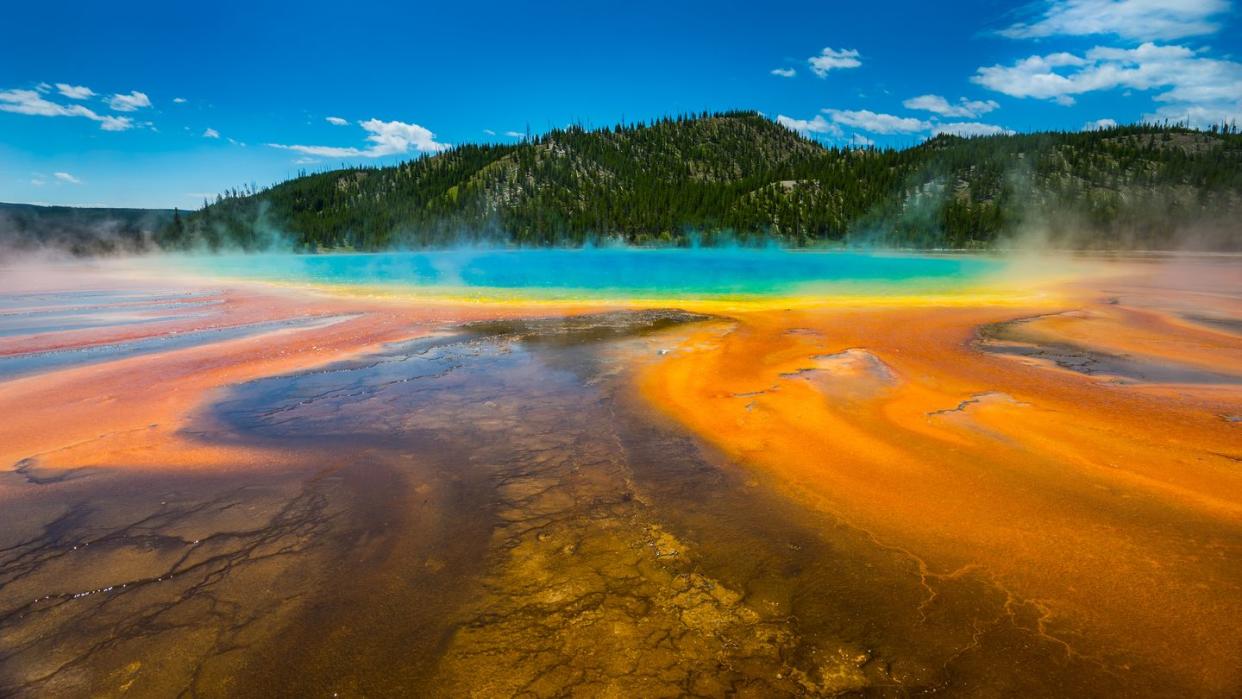
- Oops!Something went wrong.Please try again later.
"Hearst Magazines and Yahoo may earn commission or revenue on some items through these links."
I've been blessed to be a travel writer for more than two decades. I've been to 40-some countries and almost every state, but of everywhere I've roamed, I think Yellowstone National Park and its environs were among the most spectacular. Exploring this national treasure is a life-changing experience—at least it was for me when I took off across it in a rental car one week in early June. Single at the time and unable to drum up any friends to go with me, I went on my own, although my Yellowstone travel guide/itinerary can be followed by families, girlfriend groups, and even couples (this trip would make an incredible first or second honeymoon for adventurous twosomes).
In general, this schedule provides a well-rounded mix of outdoor and cultural pursuits, a lot of scenic drives and even a bit of pampering. You'll probably notice as much time is spent outside of Yellowstone's borders as within them. For most folks, this is a once-in-a-lifetime journey, so I advise seeing as much of the surrounding sights as possible. I promise you'll regret it forever if you miss Cody and Jackson Hole, not to mention the showstopping Grand Teton National Park.
A word on timing your trip. The world's first national park is open year-round, but come winter all but two of the lodging options close, along with most other facilities, entrances, and roads. And while it doesn't bring in the hordes that Great Smoky Mountains National Park does, Yellowstone can get crowded in the summertime, especially around popular sites with boardwalks, like Old Faithful and Mammoth Hot Springs.
If you have kids, consider booking your vacation as close to the shoulder season as possible, like late August, right before school starts, or the beginning of June, immediately after it ends. The weather can be brisk in early summer, with snow still piled high on the mountain peaks, but pulling on outerwear is worth it to have the park mostly to yourself, as I often did. Otherwise, I hear Yellowstone is also wonderful in September. And if you want to stay in the park's lodging, plan early! Reservations open 13 months in advance and fill up fast.
My Yellowstone Itinerary
Day 1: Depart Sheridan for Cody.
Explore Buffalo Bill Center of the West.
Overnight at Irma Hotel.Day 2: Raft with Wyoming River Trips.
Attend Nite Rodeo.
Overnight at Irma Hotel.Day 3: Depart Cody for Yellowstone National Park.
Explore Yellowstone National Park.
Overnight at Mammoth Hot Springs Hotel and Cabins.Day 4: Explore Yellowstone National Park.
Overnight at Old Faithful Inn.Day 5: Depart Yellowstone National Park for Jackson Hole.
Trail ride with Jackson Hole Pack Trips.
Overnight at Spring Creek Ranch.Day 6: Paraglide with Jackson Hole Paragliding.
Massage at Teton Mountain Lodge & Spa.
Overnight at Spring Creek Lodge.Day 7: Depart Jackson Hole Airport.
Day 1: Depart Sheridan for Cody ➡ Explore Buffalo Bill Center of the Wild West ➡ Overnight at Irma Hotel
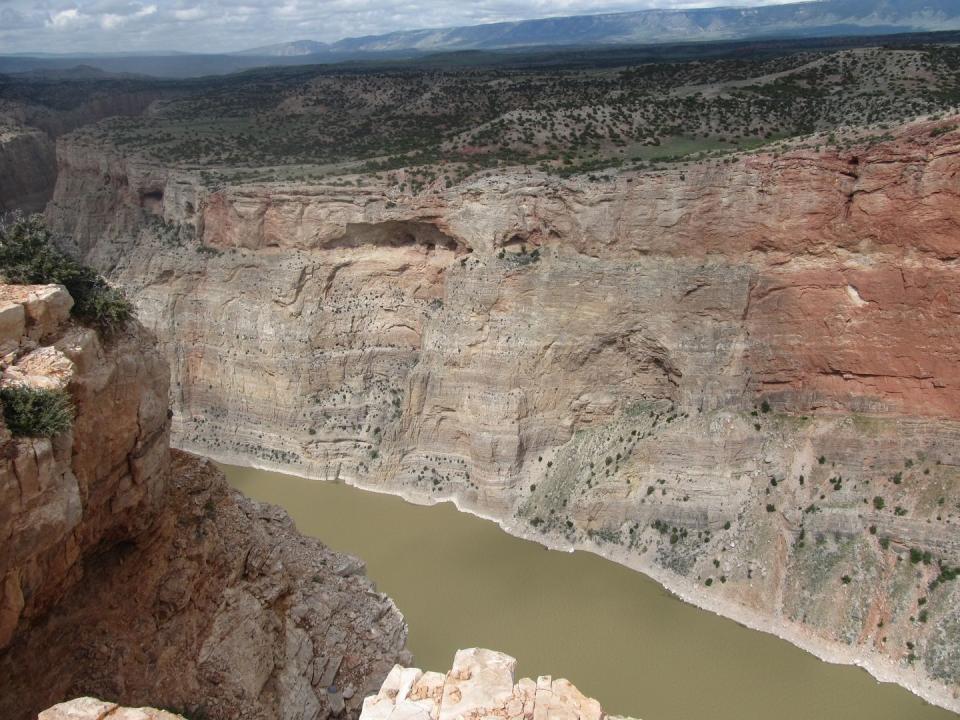
Driving Distance Sheridan to Cody: About 145 miles
There are several airports you can fly into that will get you close to Yellowstone, and which one you should choose depends on what entrance you'll be using to access the park. They include Bozeman Yellowstone International Airport, which is about a 90-minute drive from the North Entrance and two hours from the West Entrance (Yellowstone Airport is located about 10 minutes from the West Entrance, but it's smaller and offers fewer flights); Yellowstone Regional Airport, which is near Cody and an hour from the East Entrance; and Jackson Hole Airport, which is located inside Grand Teton National Park and an hour from the South Entrance.
I actually didn't utilize any of those airports coming into Wyoming but instead started my Yellowstone adventure in Sheridan, a lovely and historic cow town where I stayed with friends for a few days. After picking up my rental car bright and early, I hit the road via Route 14. The highway climbs into the Bighorn Mountains, rambling through pine forests in lower elevations fog-laden and mysterious, past peaks drenched in snow and sunshine. The drive took me into Bighorn Canyon National Recreation Area, a must-see stop, with 1,000-foot-tall cliffs towering high above a meandering river.
Located less than two hours from Cody, Pryor Mountain Wild Horse Range is also definitely worth a detour if you're staying in the town. I was able to easily spot the mustangs, said to be of Colonial Spanish American heritage, from the road. Strong and stout, with gleaming coats and incurious gazes, these iconic symbols of the American West were so beautiful they brought tears to my eyes. Full-day tours to see the horses are available from the guide service PryorWild and depart from the Pryor Mountain Wild Mustang Center in Lovell.
Fair warning: it isn't easy to tear yourself away from the jaw-dropping natural splendor within and surrounding Yellowstone. You're going to want to build in time to linger over the landscape into your itinerary. By the time I made it to Cody, I was running a little late, so I headed straight to Buffalo Bill Center of the West. I’d been told to plan to spend hours touring it, but I was still amazed by its size.
Five museums in one, the Center houses the Cody Firearms Museum, the world’s finest collection of American guns; the Whitney Western Art Museum, a rousing exhibit of Western art; the kid-friendly Draper Natural History Museum, devoted to Yellowstone’s flora and fauna; the Plains Indians Museum, a beautifully-realized exploration of this country’s original peoples; and the Buffalo Bill Museum, which traces the life of the American legend. I was probably most intrigued by the Whitney and its magnificent portraits of the animals I was hoping to encounter in Yellowstone.
By the time I checked into Cody's celebrated Irma Hotel I was tuckered out, although I still made time to head to the property's restaurant for the house specialty: juicy and tender slow-roasted prime rib. Built in 1902 by Wild West showman Buffalo Bill Cody and named for his daughter, the Irma today retains its charm and character. That's particularly true of the dining room, which still sports the famed cherrywood bar given to Cody by Queen Victoria. After my meal, logy from the long day, I was happy to retire early to my room, which was simple but comfy.
Day 2: Raft with Wyoming River Trips ➡ Attend Nite Rodeo ➡ Overnight at Irma Hotel
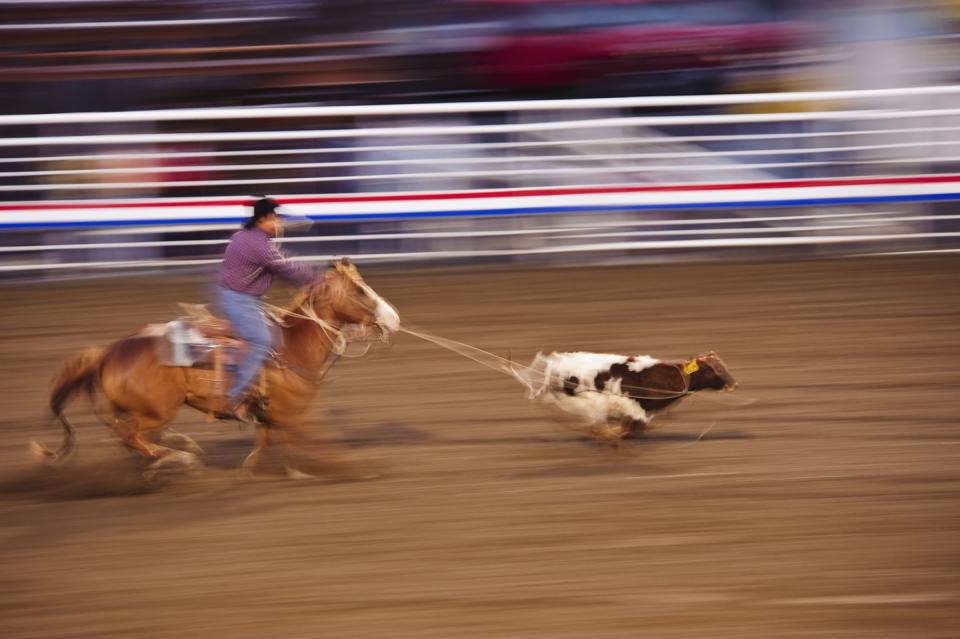
Because I'd been up so early on my big travel day, I slept in a bit the morning of Day 2. After a stroll through the Downtown Historic District, I took off for Wyoming River Trips. Family-owned since its inception in 1978, the company serves up a range of rafting and kayaking options. I opted for the three-hour Full Canyon Rafting Adventure, which was the perfect way to ease into my trip. The sun, shining down from boldly blue skies, was warm, even if the water was chilly. Not that there was too much splashing happening. The 12-mile section of Shoshone River we paddled was low-key, with Class I and II rapids, the mildest of the standardized whitewater classification system.
There was plenty of time to take in the magnificent Red Rock Canyon surrounding us—a sight I'd expect to see in southern Utah more than eastern Wyoming—and to chat with our affable guide, who was happy to answer my questions about the area’s wildlife. (Among other facts, I learned definitively that Yellowstone is filled with bison, not buffalo, and the latter do not feature humps.) This trip would absolutely be appropriate for families, as long as the littles weigh at least 50 pounds.
Speaking of family fun, the Cody Nite Rodeo, which kicks off every evening from June through August at 8 p.m., is ideal entertainment for all ages. The night I went it was packed with cheering people from age two to what looked like 92. Children can get their faces painted by rodeo clowns, learn to rope and even participate in the hilarious Calf Scramble, which involves chasing a couple of baby cows around the arena and trying to pull the ribbons off of their tails.
Founded in 1938 by a former performer in Buffalo Bill Cody's Wild West Show, the Cody Nite Rodeo is said to be the world's longest-running nightly summer rodeo. It's a much-loved, authentic and action-packed outdoor event frequented by locals and vacationers alike, chock full of true blue Wild West cowboy mystique. For two hours I sat munching on popcorn as I watched bull riding and steer wrestling, team roping and women’s barrel racing. I groaned at the clown’s corny jokes, gasped at the spills the bareback riders took and felt truly grateful that I had a chance to attend this most wonderfully American of competitions.
Day 3: Depart Cody for Yellowstone National Park ➡ Explore Yellowstone National Park ➡ Overnight at Mammoth Hot Springs Hotel and Cabins
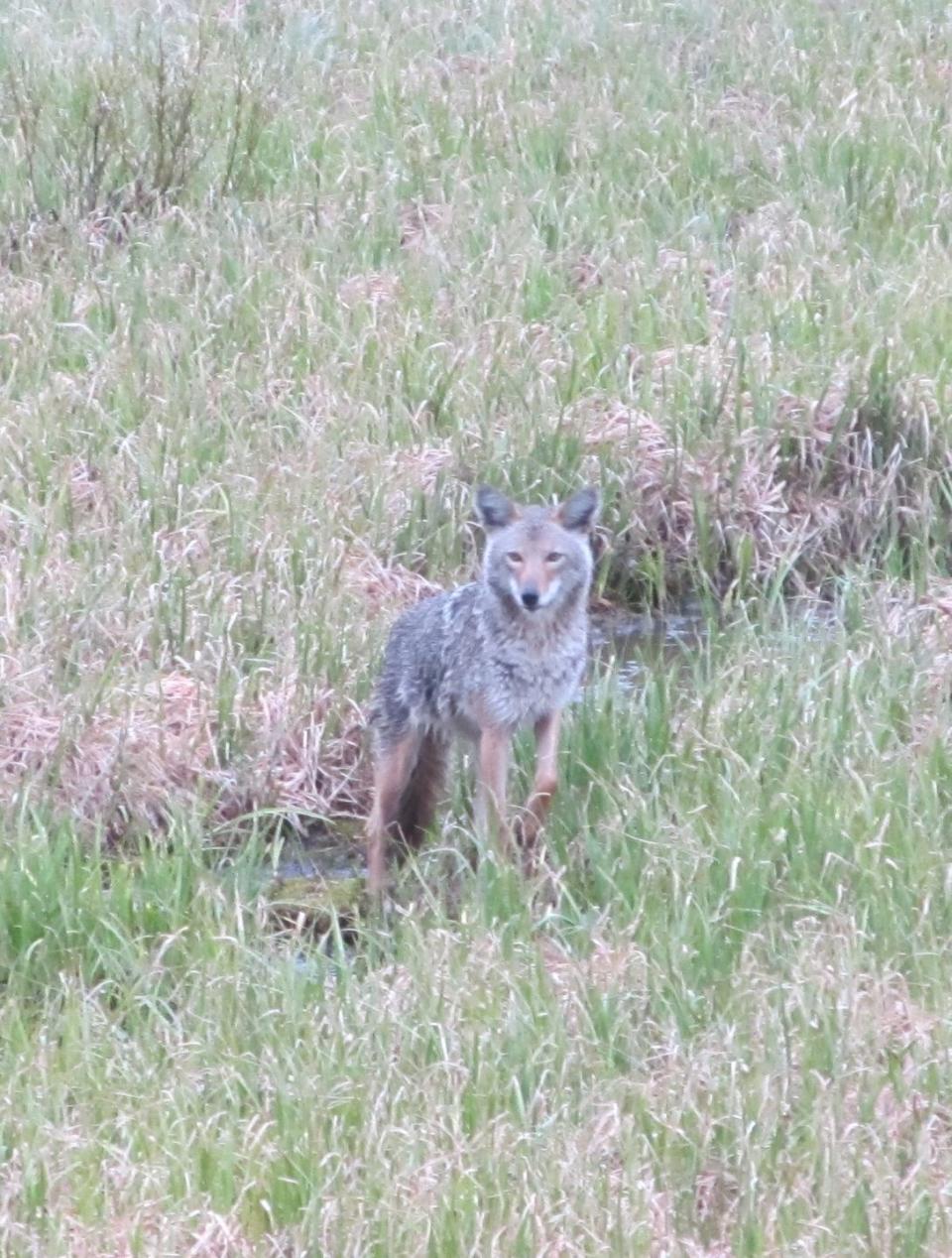
Driving Distance Cody to Yellowstone Northeast Entrance: About 80 miles
Following another sublime night's sleep at the Irma, I was up before daybreak to head to Yellowstone. I'd decided to use the park's Northeast Entrance at Cooke City, Montana, rather than the East Entrance, which is closer to Cody by about 25 miles. I'd been told by locals that the Northeast gate experiences even less traffic than the East gate, and provides the best chance to see some of the park's celebrated animal population. If, that is, I got there bright and early. So bleary-eyed, I headed off in my rental down the Chief Joseph Scenic Byway, hoping that waking before dawn's early light was going to pay off.
It did. The sun hadn't been up for too long as I handed my $35 vehicle fee to the ranger at the gate. Upon entering the park I was rewarded almost immediately with a sight that made me gasp aloud: a mother moose tending her baby. They weren't far from the road, but I might have missed them if not for a photographer standing beside his truck. He told me he'd seen this same female yesterday, without the calf—the newborn was just a day old. I watched them for what felt like hours before I resumed my journey, keeping my eyes peeled as I entered the Lamar Valley. Dubbed the American Serengeti for its copious amounts of wildlife, it's home to grizzly bears and wolf packs.
I didn't spot either species, but as I spent that first day in the park slowly motoring around the Upper Loop road, I saw an unbelievable array of animals. From the bison lumbering past my car and elk trotting alongside the road, to the coyotes frolicking in a pasture and the black bear munching vegetation, it was a veritable parade of critters. I suppose Yellowstone's 2.2 million acres are as well-known for their geothermal activity as their wildlife, but what I most cherished about my time there was the opportunity to see the West's most majestic beasts in their native environment. Unlike so much in life, Yellowstone lives up to the hype.
That's not to say Yellowstone's landscape didn't appeal to me. The Upper Loop, a 142-mile track that makes up the northern half of Yellowstone's historic Grand Loop Road, includes access to Tower Fall. The waterfall dramatically plunges 132 feet and is surrounded by pinnacles formed by ancient lava flow. It was breathtaking, though I found the Yellowstone River's Grand Canyon even more impressive. Measuring 20 miles long and more than 1,000 feet deep, it's home to two waterfalls. There are loads of trails that wind along and down into the canyon, but I stopped at Artist Point, which provides a picture-perfect view of the 308-foot Lower Falls.
I would have liked to explore the area more, but I needed to check in to Mammoth Hot Springs Hotel and Cabins. Renovated a few years ago to the tune of $30 million, the hotel, which mostly dates to 1936, is surprisingly sleek and modern. After dropping my luggage off in my room, I headed for a drink at the Map Room Bar, where I was greeted by the sight of the watering hole's namesake stretching across the wall. According to the bartender, the massive map of the U.S. was crafted in 1936 from more than 2,500 inlaid pieces of 15 different kinds of wood. But my cocktail sunk me: I could barely keep my eyes open over my plate of mushroom pasta in the dining room. I was back up to my room and in bed by 9.
Day 4: Explore Yellowstone National Park ➡ Overnight at Old Faithful Inn
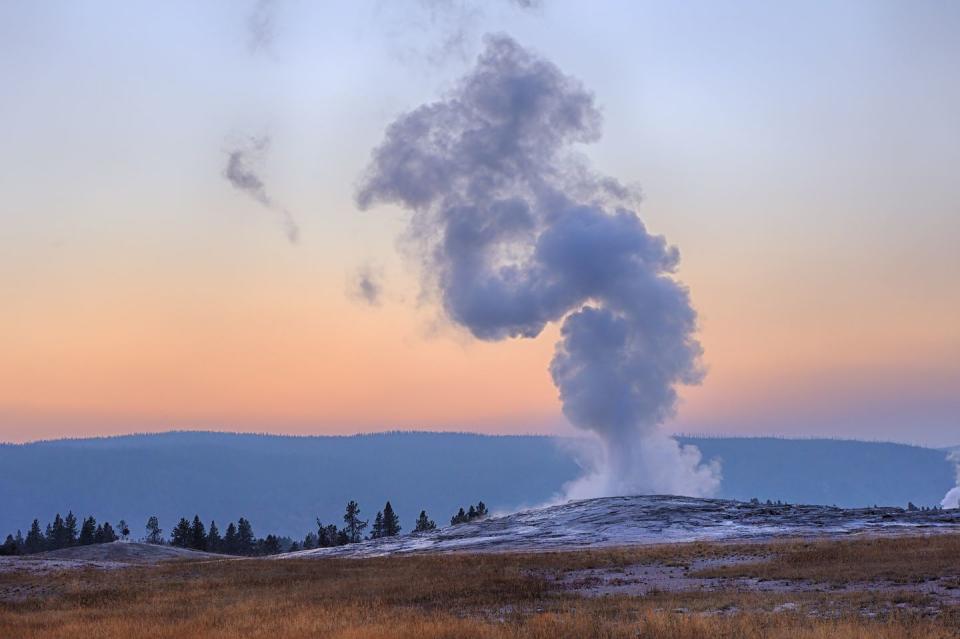
My early night paid off in an early morning, and before heading south toward Old Faithful, I took a long stroll through Mammoth Hot Springs, an otherworldly network of hydrothermal features and naturally occurring terraced travertine deposits. The boardwalk made for an easy walk, and I enjoyed the slightly foreboding vibe of the site, which was dotted here and then by dead trees, blackened and skeletal, and ethereal mists rising from the earth. There weren't many people there, probably because it was so early in the day, which made the whole experience a little more eerie. Aside from the Lamar Valley, I think this was my favorite part of the park because it was totally unlike any place else I'd ever experienced.
I spent the rest of the day driving south toward Old Faithful, stopping at sites that interested me. That included a lot of geysers—after all, Yellowstone protects about half the world’s active geysers—like the ones in the Norris Geyser Basin. Tucked away where the western Upper and Lower Loop meet, it's said to be the oldest thermal zone in the park and, at more than 450 degrees Fahrenheit, the hottest one, too. I found the Norris Museum, which was built in 1930 and acts as a sort of gateway to the basin, worth a peek for its exhibits explaining the ins and outs of geothermal activity.
Most beautiful of all was Grand Prismatic Spring, which lies within the Midway Geyser Basin, further south on the Lower Loop. Eye-popping orange on the perimeter, it morphs into yellow, green, and turquoise before opting for a deep, rich blue in the center. Along with its colors, what struck me immediately was the transparent size of it: it's 370 feet across. A boardwalk gets you close (but not too close). There are other pools and a geyser at the basin, but for me, they couldn't compare to Grand Prismatic Spring. It was the undisputed star of the show.
By the time I reached Old Faithful, I was ready to call it a day. Luckily, the geyser only kept me waiting for about 10 minutes. According to a ranger I talked to, it blows its stack roughly every hour and a half for as long as five minutes, reaching an average of 130 feet in height. The eruption I saw didn't seem as high or as long, but it was fun to see. Afterward, I dropped by the Old Faithful Visitor Education Center, which was loaded with info about the geyser, as well as the Yellowstone supervolcano. It's an extremely kid-friendly facility, with a dedicated room for "Young Scientists" featuring hands-on displays.
Next, it was on to the Old Faithful Inn, built in 1903-1904 of locally sourced pine and stone. One of the largest log buildings in the world, it's a National Historic Landmark and the most popular lodging in Yellowstone. The lobby is immense, rising more than 70 feet high, and after I checked in I came back to sit and people-watch in front of the monolithic stone fireplace. The inn has an onsite deli, so I grabbed a quickie sandwich to save some cash and then headed back to my room.
I was staying in the Old House, the original part of the hotel, so in addition to no air conditioning, wifi, or television (all fine by me), there was no private bathroom. Although I didn't love getting up in the middle of the night to walk down the hall to the communal facilities, the room, with its rustic log walls, was so charming it was worth the inconvenience. (Some rooms in the Old House do feature bathrooms, which might be a better choice for families with small children.)
Day 5: Depart Yellowstone National Park for Jackson ➡ Trail ride with Jackson Hole Pack Trips ➡ Overnight at Spring Creek Ranch
Driving Distance Old Faithful Inn to Jackson: About 95 miles
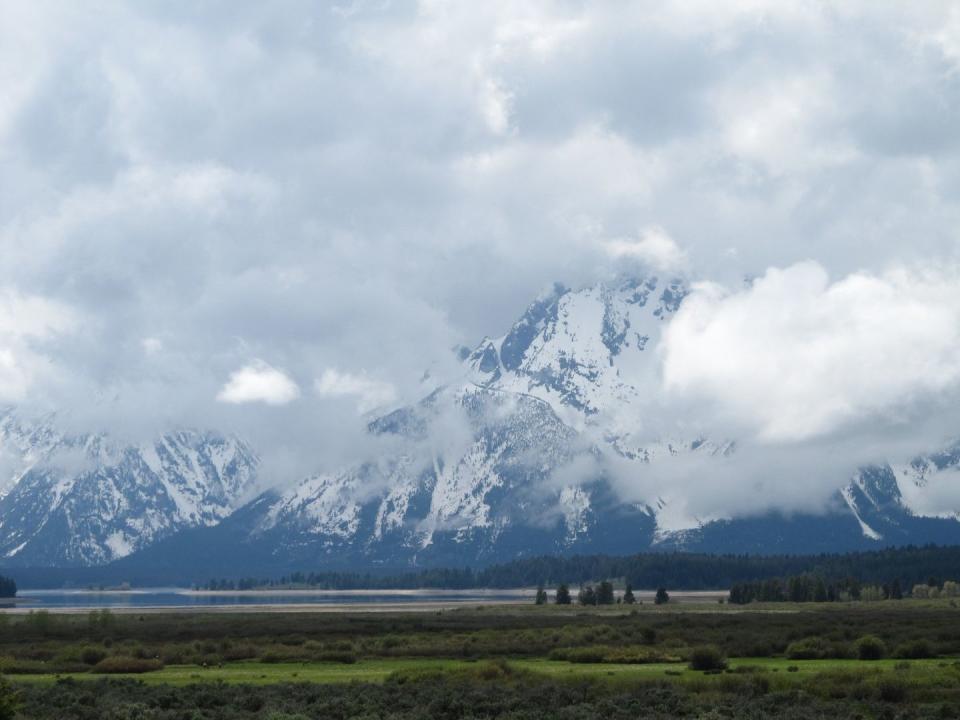
It was another early morning as I hit the road to Jackson along the John D. Rockefeller Jr. Parkway. I was sorry to leave Yellowstone, but the drive south cut through Grand Teton National Park, and the scenery, to my astonishment, was even more dazzling than what I'd seen the past several days. Spreading out before me rose the young range of the Rockies that are among the most photographed mountains on the planet. The jagged, snow-drenched peaks were so magnificent that I pulled the car over and just sat for a spell, dumbfounded. I was making good time, however, so I had time for a quick wander around Jackson.
I headed for the Town Square, where a chatty resident answered a question for me: Jackson is the chichi town I was currently exploring. Jackson Hole, the name I'd heard bandied about most, is the 50-mile-long valley in which it perches so prettily. After a gander at the park's beloved entryway arches, made of hundreds of elk antlers gathered by Boy Scouts from the nearby National Elk Refuge, I headed to the Million Dollar Cowboy Bar across the street. The establishment is famous for its live music—everyone from Willie Nelson to Waylon Jennings has played there—but I contented myself with a peek at the saddle bar stools and a pricey (but decent) burger.
I needed to fortify myself, because up next was a trail ride with Jackson Hole Pack Trips and Trail Rides, which I understand is now closed. (I'd recommend Willow Creek Trail Rides, which provides rides through the same area and welcomes kids 8 and older, instead). After meeting my guide, Bob, at the Willow Creek Trailhead, we begin our journey into the Bridger-Teton National Forest. It had begun to rain, but the landscape was so magnificent I didn't care a bit. Through meadows dotted with silvery sagebrush we climbed, into aspen groves and piney woods, the Tetons standing silent guard.
Eventually, seeing my joy at riding past slopes dotted by elk, under skies graced by red-tailed hawks, Bob asked me if I’d like to cross Willow Creek, swollen with rain. I agreed and we forded it once, then, thrillingly, again. The current was strong, the water high, but my horse’s steps were sure and I never felt unsafe. Finally, after hours, our ride came to an end. Exhausted, wet and sore, I'd just spent one of the best afternoons of my life. I thanked Bob and took off for Spring Creek Ranch, where I was spending the last two nights of my trip.
Tucked away on a wildlife sanctuary above Jackson, the property features posh inn rooms, townhouses and mountain villas. I'd splurged and chosen the latter, which, with multiple bedrooms, would be ideal for a family. The view from the upper deck of my villa alone made the price worth it, with the verdant valley spread out below me, the Grand Tetons soaring beyond. Cool as the night was, I slept with my windows open to experience the fresh, fragrant mountain air as it blew down from the higher elevations on its way into Jackson Hole.
Day 6: Paraglide with Jackson Hole Paragliding ➡ Massage at Teton Mountain Lodge & Spa ➡ Overnight at Spring Creek Ranch
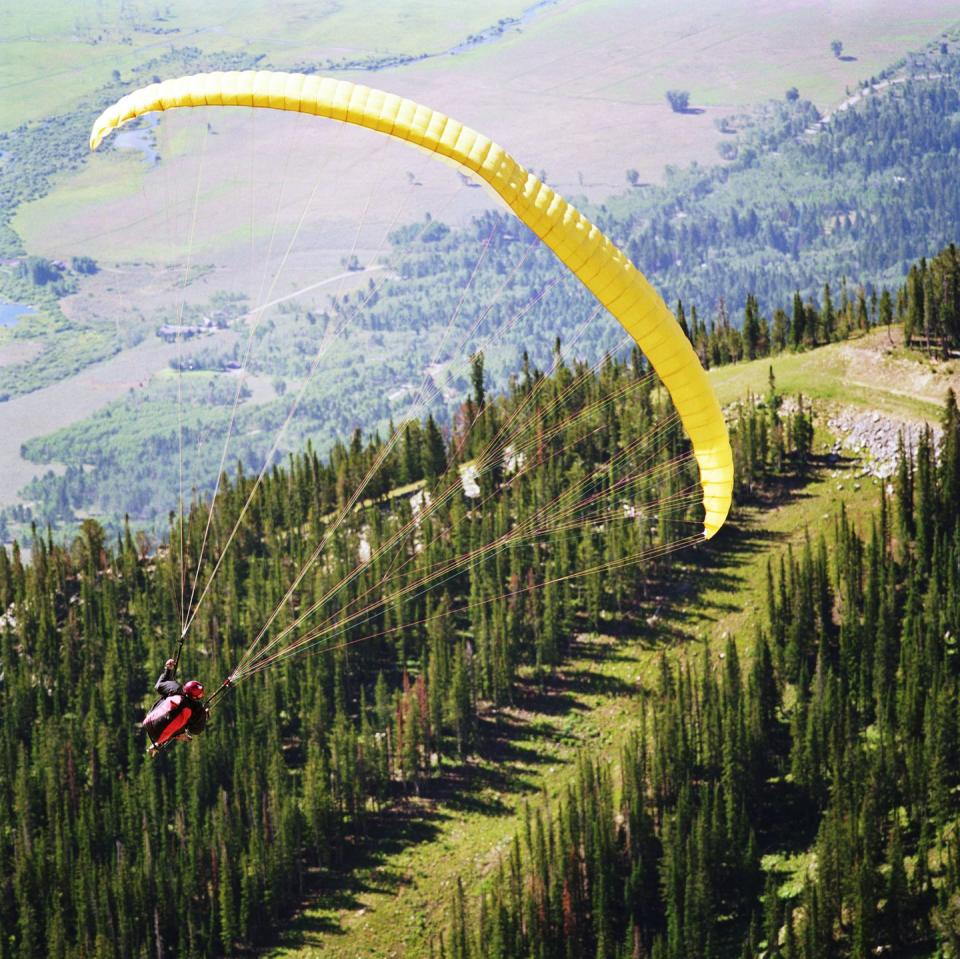
I awoke in pretty much the most beautiful place I've ever been, in the most luxurious bed I'd ever experienced, but my mood was still tinged with sadness. It was the last of my amazing trip—though one final adventure awaited. That morning I was going to fly with Jackson Hole Paragliding. It was something I’d never done before: strap myself to a professional paragliding pilot and jump off a perfectly good mountain. And that first step was going to be a doozy: 3000 vertical feet more or less straight down.
I met up with Scott, my pilot, and we took his truck up the switchback trail behind Jackson Hole Mountain Resort. After placing a helmet on my head, he tucked me into my harness as the parachute was unfurled behind us. Scott explained that when the time came, I needed to stride firmly toward the edge of the drop. The chute, he said, would fill with wind, pulling us into the sky. When he noticed me shaking, he suggested I take some deep breaths. I did, and it helped calm my anxiety. A little.
And then almost before I knew it we had lifted off and I was in the air, thousands of feet above the earth. I screamed with more joy than fear as Scott guided us over the valley. It was surprisingly peaceful—at least until he began turning us in tight spirals. It was like riding the fastest, highest merry-go-round in the world, and just when I thought I wouldn't be able to stand it anymore, he pulled us out of it and we gently landed. Scott asked me what I thought and, not exaggerating a bit, I hollered, “I want to do it again!”
But I couldn't, because it was time for my massage at Teton Mountain Lodge & Spa. If there is a more perfect combination than following up paragliding with a pampering massage, I don’t know what it is. I'd booked an hour-long Noble Massage, which combined elements of Swedish and deep tissue techniques. Under my therapist’s capable hands, the adrenaline faded, slowly replaced with deep calm. It was the ultimate in pleasure—moving from exquisite tension to total tranquility—and the best way I think I could have ended my Yellowstone adventure.
Day 7: Depart Jackson Hole Airport
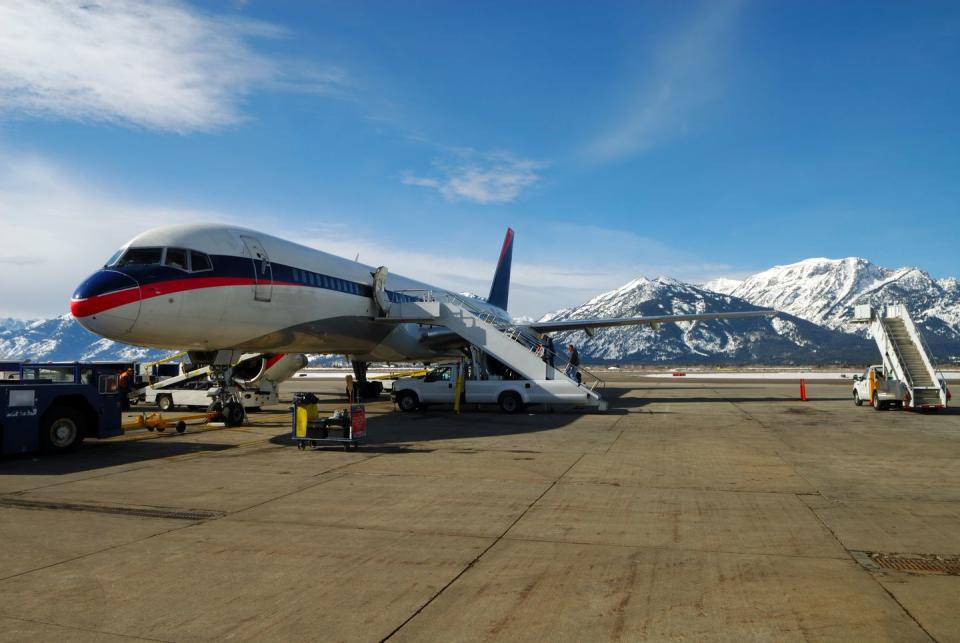
Driving Distance Spring Creek Ranch to Jackson Hole Airport: About 12 miles
It's a straight shot north to Jackson Hole Airport from Spring Creek Ranch, a trip that only takes about 20 minutes. The airport itself, the only one located within a national park, provides non-stop service to and from destinations like Dallas, Denver, Los Angeles, and Newark, depending on the season. It is as upmarket as the rest of Jackson Hole, with plenty of exposed wood and stone, plus fireplaces and leather chairs in the waiting areas. I especially got a kick out of the big sign reminding passengers to get rid of their bear spray before entering security (there are two recycling stations specifically for cans of the stuff, too).
As my plane pulled away from the gate, I thought about my trip, which even then I knew had changed me. Part of it was simply successfully navigating the challenges, and joys, of a week-long road trip through the Wild West alone. Although the expedition went surprisingly smoothly, I had no one to depend on but myself if I ended up lost, ran out of gas, or got a flat tire. I felt a little stronger, more capable, even bolder—especially after facing my fear of heights by paragliding. I surprised even myself for signing up for it, but I think the untamed spirit of the Wild West tends to encourage a bit of boundary-pushing.
I don't know that I would change much about this itinerary. I do wish I could have spent another day in Yellowstone, but I just couldn't swing any more time away. That said, I regret not hiking there. I walked the boardwalks but I never got on a trail or out in the backcountry. That was mostly due to time constraints, although I also didn't feel comfortable hiking solo. My sense of direction isn't the strongest and there's a reason why Jackson Hole Airport has that bear spray sign. They're a valid enough concern anyone heading into the parks should carry a can. If I ever get back to Yellowstone, I think I might arrange for a guided hike. In the meantime, I'll just dream of my return.
You Might Also Like

